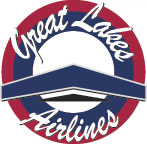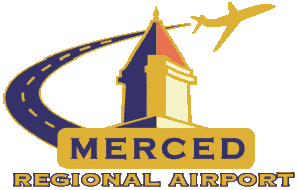
Great Lakes Airlines was an American regional airline operating domestic scheduled and charter services. Corporate headquarters were in Cheyenne, Wyoming, with a hub at Denver International Airport.

Ely Airport is a county-owned airport three miles northeast of Ely, in White Pine County, Nevada, United States.
Cortez Municipal Airport is three miles southwest of Cortez, in Montezuma County, Colorado, United States. It has passenger service from one airline: Key Lime Air DBA Denver Air Connection.

Watertown Regional Airport, formerly Watertown Municipal Airport, is two miles northwest of Watertown in Codington County, South Dakota, United States.

Merced Regional Airport is located two miles (3.2 km) southwest of Merced, in Merced County, California. The National Plan of Integrated Airport Systems for 2021–2025 categorized it as a Commercial Service – Nonprimary airport. Commercial passenger service is subsidized by the Essential Air Service program.

Cedar City Regional Airport is two miles northwest of Cedar City, in Iron County, Utah. It is owned by the Cedar City Corporation. Airline flights are subsidized by the Essential Air Service program.

Western Nebraska Regional Airport is three miles east of Scottsbluff, in Scotts Bluff County, Nebraska. The airport is owned by the Airport Authority of Scotts Bluff County and is named after William B. Heilig. Known as "Scottsbluff's Mr. Aviation," he was a World War II United States Army Air Force primary flight instructor, a civil flight instructor, and manager of the city's airport.
Grant County Airport is a county-owned, public-use airport in Grant County, New Mexico, United States. It is located 10 nautical miles southeast of the central business district of Silver City, New Mexico. The airport is mostly used for general aviation, but is also served by one commercial airline. Service is subsidized by the Essential Air Service program.
Clovis Regional Airport is a city-owned, public-use airport located six nautical miles east of the central business district of Clovis, a city in Curry County, New Mexico, United States. The facility opened in April, 1959 and is mostly used for general aviation, but is also served by one commercial airline. Current scheduled passenger service is subsidized by the Essential Air Service program. The airport was previously known as Clovis Municipal Airport but underwent a name change to Clovis Regional Airport in 2021 when it was upgraded to Part 121 status.

Kingman Airport is a city-owned, public-use airport located 9 miles northeast of the central business district of Kingman, a city in Mohave County, Arizona, United States.

Pueblo Memorial Airport is a public airport located six miles east of Pueblo, in Pueblo County, Colorado, United States. It is primarily used for general aviation.

Liberal Mid-America Regional Airport is two miles west of Liberal, in Seward County, Kansas. It is used for general aviation and is subsidized by the Essential Air Service program. Formerly Liberal Municipal Airport, it hosts the Mid-America Air Museum.

Salina Regional Airport, formerly Salina Municipal Airport, is located in Salina, Kansas, United States. The airport is owned by the Salina Airport Authority. It is used for general aviation, and has service by one passenger airline, SkyWest Airlines, which is subsidized by the Essential Air Service program.

Cape Girardeau Regional Airport is a city owned public use airport in Scott County, Missouri, United States. It is located five nautical miles southwest of the central business district of Cape Girardeau, a city in Cape Girardeau County, Missouri, United States. The airport is used for general aviation, and has scheduled service by Contour Airlines with subsidized Essential Air Service program flights to Nashville.

Southeast Iowa Regional Airport is a public airport located two miles southwest of Burlington, in Des Moines County, Iowa. It is owned by the Southeast Iowa Regional Airport Authority which includes representatives from the city of Burlington, the city of West Burlington, and Des Moines County. The airport is used for general aviation and sees one airline, a service subsidized by the federal government's Essential Air Service program at a cost of $1,917,566.

Lewistown Municipal Airport is two miles southwest of Lewistown, in Fergus County, Montana. It is owned by the city and county.
Miles City Airport or Frank Wiley Field is a city-owned airport two miles northwest of Miles City, in Custer County, Montana, United States. The airport was served by one airline, subsidized by the Essential Air Service program. EAS subsidies ended on July 15, 2013, due to subsidy per passenger exceeding $1000, leaving Miles City without scheduled air service.

Veterans Airport of Southern Illinois , also known as Williamson County Regional Airport, is five miles west of Marion, in Williamson County, Illinois, United States. The airport is owned by the Williamson County Airport Authority. It sees one airline, subsidized by the federal government's Essential Air Service program at an annual cost of $2,562,819 or $141 per passenger. On November 11, 2016 during the grand opening ceremony for the new terminal, the airport was renamed to "Veterans Airport of Southern Illinois" to honor veterans and better reflect the regional nature of the airport.

Ogdensburg International Airport is a public airport located in the town of Oswegatchie, 2 miles (3.2 km) southeast of Ogdensburg, in St. Lawrence County, New York. It is owned by the Ogdensburg Bridge & Port Authority, which also owns and operates the Ogdensburg–Prescott International Bridge, Port of Ogdensburg-Marine Terminal Facility, Commerce Park, Port of Waddington, a medium-heavy industrial park and two short line railroads. The Ogdensburg Bridge and Port Authority is a New York State public-benefit corporation. The international airport is just outside the city limits on NY 812. It is used for general aviation and commercial service. Scheduled commercial flights are operated by one airline: Contour Airlines.

Alamogordo–White Sands Regional Airport is a city-owned public-use airport located four nautical miles southwest of the central business district of Alamogordo, a city in Otero County, New Mexico. It opened in 1959 and was formerly known as Alamogordo Municipal Airport. The airport was the home for Black Hills Aviation, with a fleet of fire fighting aircraft. The company was bought out by Neptune Aviation in 1993 and moved to Missoula, Montana. Neptune still bases some of its current fleet of British Aerospace 146 jets at Alamogordo during active forest fire seasons. The airport also sees large MD-87 firefighting jets operated by Erickson Aero Tanker.




















